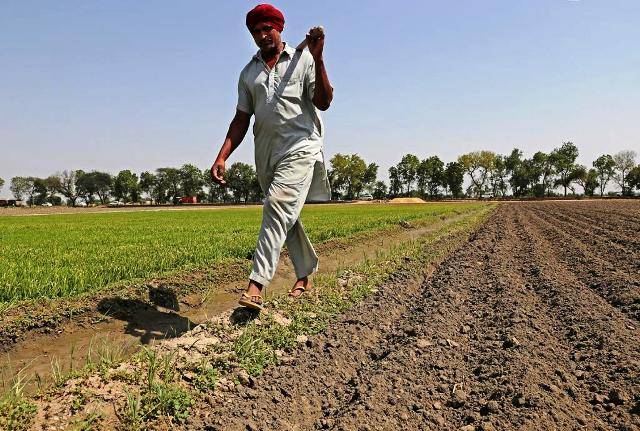
Ever since the Hon'ble Prime Minister Shri Narendra Modi announced his mission to double the Farmers income by 2022 , it has become a vital topic of discussion among the farming community. Farmers and the cultivation are available as products and services, as it is heading towards the agripreneurship. Hence, the standardization implied on the same is significant.
Standardization is achieved by setting generally accepted guidelines in regards to how a product or service is created or supported, as well as to how a business is operated or how certain required processes are governed. The goal of standardization is to enforce a level of consistency or uniformity to certain practices or operations within the selected environment.
The agricultural standardization is a high quality, commercial, large-scale, intensive process of agricultural modernization by making scientific and technological achievements into the standards and also making agricultural production and business activities highly efficient, cost-effective and, by increasing the number of agricultural products, improving the quality of agricultural products.
Agricultural standardization can help to improve the level of agricultural products’ safety. Therefore, according to the actual situation in India, discussing standardization of agricultural production in the process of household behavior, analyzing the impact factors of the farmer who involved in agricultural standardization, is the benefit to guide farmers to actively participate in a standardization of agricultural production and improve quality of agricultural products.

In India, agricultural practices are highly localized occupations and display a lot of variability in cultural practices and varietal preferences across regions. Further, with the opening up of the world market, there is a flow of trade in the agricultural products. It is, therefore, necessary to define and assign certain common minimum standards to facilitate trade in these products and to win the confidence of the consumers within the country and outside.
Considerable milestones have been reached in the productivity of farm produce in the country. Concerns about food safety and quality, environmental protection, worker safety, and welfare have also gained importance. Thus, it is desirable to set up control and compliance systems for various kinds of farm produce covering horticulture, floriculture, food grains, aquaculture, livestock etc. In this context, it is necessary to pay attention to the quality of production practices requiring minute attention at different aspects of production, handling, and distribution. There are different systems and standards available for control measures in value addition through processing of food meant for human consumption and animals producing food for human consumption. The areas where appropriate control measures need to be strengthened are farms producing raw material such as food grains, fruits, and vegetables, floriculture, aquaculture, livestock etc. to ensure sustained supply of produce of the desirable quality. Although grade standards on size, shape, colour and local preferences are available for most of the agricultural produce marketed and consumed in India, their quality in terms of maturity standards, residues of pesticides and other contaminants, microbial loads, etc. have not been adequately covered. Good Agricultural Practices (GAP) have a bearing on these parameters. In other words, a farm producing raw material for direct consumption or for further processing and following GAP would have an advantage in terms of safety and quality over the other farms. Thus, these practices would add value to the produce.

Such standards envisaging focused approach for implementing good agricultural practices, traceability etc. through appropriate infrastructure, record keeping and monitoring would reap following broad benefits:
-
Development of basic infrastructure at the field level.
-
Build up culture for good agricultural practices by the farmers.
-
Uniform approach across farms regardless of their sizes.
-
Increased awareness among the farmers as well as the consumers about the need for consumption of good quality and safe food.
-
Traceability through complete integration of food chain
-
Improvement in the environment as well as soil fertility
-
Worker safety and welfare.
-
Reputation in the international market as a producer of good quality and safe produce, and
-
Removal of Technical Barriers to Trade (TBTs) faced by exporters of agro products.
Standardization can be found in business processes when companies require a consistent level of quality. For example, many fast food franchises have detailed processes documented to make sure that a burger is prepared in the same manner regardless of which establishment in its franchise a consumer visits.
Certain production and manufacturing businesses adhere to agency standards to ensure all products of the same category are created to the same specifications between different facilities or companies. For example, the wood products industry participates in international standards to maintain consistency of like products. This can include references to acceptable product sizing, water solubility, grading, and composite properties. These standards ensure that when a person goes to a retail store to purchase an item, such as a two-by-four, the sizing is consistent regardless of the store visited or the product manufactured.
Standardized lots allows for greater liquidity in the financial markets. With increased liquidity comes reduced spreads in the market, creating an efficient process for all participants involved. In the stock market, the standard minimum stock order that can be placed through an exchange without incurring higher commission fees is 100 shares.
Standardization is a non-negotiable process used in options and futures trading for price discovery and establishing trade bases for contracts. The standard lot for one equity options contract is 100 underlying shares of a company's stock. In other words, one options contract represents 100 shares.
When it comes to the future market, the standardized contract sizes vary depending on the type of contract that is traded. For example, one futures contract for corn, soybeans, wheat, or oats has a lot size of 5,000 bushels of the commodity.
To sum up , agriculture is the mainstay of life, feeding the world’s populations and producing what we need to survive and thrive. Sustainable agriculture is achieved through efficient use of farmland. Standards can be valuable tools to bring this to fruition by providing guidance and best practice for machinery, tools and farming methods. Standards for agriculture cover all aspects of farming, from irrigation and global positioning systems (GPS) to agricultural machinery, animal welfare and sustainable farm management. They help to promote effective farming methods while ensuring that everything in the supply chain – from farm to fork – meets adequate levels of safety and quality. By setting internationally agreed solutions to global challenges, Standards for agriculture also foster the sustainability and sound environmental management that contribute to a better future.















